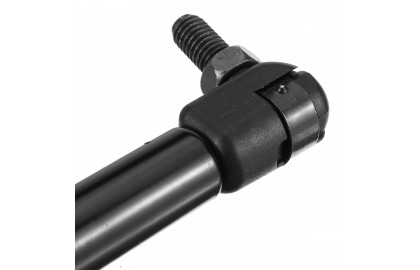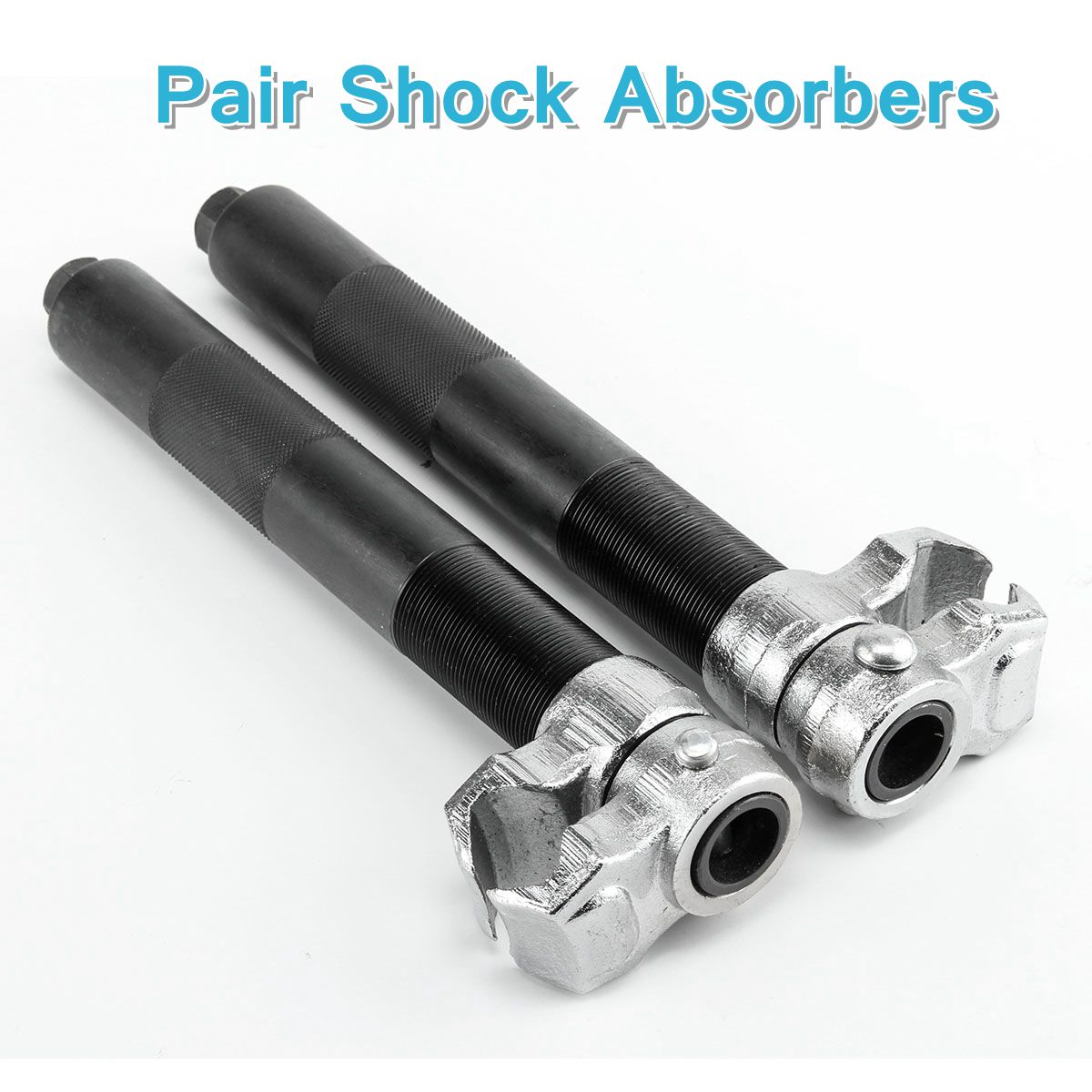Briefly review the structure of the shock absorber


Shock Absorber Construction
First, let's briefly review the structure of the shock absorber. Because in order to improve performance, most modified shock absorbers are single-tube shock absorbers. Let's take the monocular as an example:
The piston, valve plate and connecting rod are assembled together and inserted into the cylinder. There is a guide between the connecting rod and the cylinder to ensure that the movement track of the piston is coaxial with the cylinder. There is an oil seal end cover at the opening of the cylinder. Oil and gas are sealed. The pressure of the gas is as high as more than ten bars.
Other accessories outside the cylinder belong to the shock absorber assembly and are generally tested by the OEM.
working environment
The working environment of the shock absorber is quite harsh. When the vehicle is running, the shock absorber is always in a state of high-frequency motion, and often needs to absorb strong impacts.
The shock absorber assembly is exposed to the road environment, and mud, sand, water, and heat are all killers that damage the shock absorber.
The front shock absorber of most civilian vehicles still adopts the McPherson structure, which also needs to bear part of the lateral force and friction force.
In short, the shock absorber is equivalent to a person's knee, and when people get old, their legs get old first, so does the shock absorber.
type of damage
The common types of damage for riders are oil leakage, air leakage, reduced damping force, and various abnormal noises.
Oil leakage is basically accompanied by air leakage, the main reason is the damage of the oil seal. One very important reason is that the surface of the piston rod is damaged and scratched by the erosion of sand and sand to scratch the oil seal.
I don’t know if you have noticed that the dust jacket material of the original shock absorber is very soft and difficult to damage, but the dust jacket of the modified shock absorber is made of plastic-like material, which is much faster than the original factory.
After the dust cover is damaged, the piston rod is exposed to sand and humid environment, which will inevitably cause rapid damage to the oil seal and lead to damage to the shock absorber. Therefore, some manufacturers have introduced shock absorber protective sleeves to provide additional protection for shock absorbers.
UTVs and motocross bikes were the first to use outsourced shocks.
Of course, you can also buy a sleeve to save money, which is what Yang Gong did. Shock absorbers with adjustable damping also have a leak path that is the damping adjustment needle.
Variable damping is achieved by adjusting the size of the hole in the piston rod of the damping needle up and down to adjust the amount of oil flowing through, so as to realize the change of damping. The upper end of the damping needle is connected to the outside of the shock absorber.
If the sealing ring on the damping needle is damaged, it will also cause oil and gas leakage.
Usually, the damping oil can be seen in the hollow of the piston rod (where the adjustment knob is inserted). One of the reasons for this is that the strength of the seal is insufficient. When the optional spring is too soft or the damping is adjusted too soft, the oil pressure inside the piston rod is too high to cause oil leakage.
But the 2Way shock absorber piston in the picture is equipped with a one-way valve, which will improve this situation.
There are many reasons for the decrease of the damping force value, such as oil leakage and air leakage, because the damping oil reduces the movement of the piston, which will cause air bubbles and thus lose the damping force, and air leakage will cause cavitation and also lose the damping force.
If the shock absorber is pressed, the piston rod will not pop out by itself. Unfortunately, the gas pressure inside the shock absorber is insufficient.
If no resistance is felt when the piston rod is pressed and pulled out, it is likely that the valve plate has failed. It is possible that the top nut of the piston rod is loose, the valve plate falls off, the piston ring is damaged (with the piston rod shaking from side to side), the piston is damaged, and so on.
There are many reasons for the abnormal noise. The abnormal noise outside the shock absorber may mainly come from the top of the fisheye tower, the spring rotation is not smooth, the spring collision caused by negative preload, and the looseness caused by the lock ring not being locked.
The abnormal noise inside the shock absorber mostly comes from the collision of the recovery buffer block and the sound caused by the high-speed flow of oil.
Previously, Yang Gong’s 2Way found that if the rebound damping is too small, there will be a chirping sound when passing the speed bump. It is the noise made by the damping oil passing through the piston section at high speed.
There are other noises caused by the vibration of the valve plate caused by the flow of oil. These are difficult to eliminate because the general coil shock absorber manufacturers do not have the strength to do CFD or modal analysis.
Original OEM supporting shock absorber
Why is it superior in durability
Because the number of shock absorbers for mass-produced cars is huge, with the sales of hundreds of thousands of a car, the cost of research and development can also be spread equally on each shock absorber. From the beginning of the design, the durability of each component inside must be considered. After being assembled into a shock absorber, it will also pass various bench tests of the shock absorber supplier.
As far as I know from friends who work for shock absorber manufacturers, the durability tests of shock absorber suppliers are divided into valve system durability and structural durability.
The durability of the valve system determines the service life of the shock absorber, and the durability of the structure includes salt spray, sealing tests, etc.
The most common test for the durability of the valve system is BIFI. BIFI is a composite test for different speeds and frequencies. The decomposition is the number of cycles and the working speed of the shock absorber. In short, the shock absorber is pulled and exploded on the test stand to evaluate the accumulated damage.
Shock absorber durability test equipment: Accelerometer microphones can be superimposed to detect vibration and noise
The shock absorber assembly must also pass the bench test of the car manufacturer and the durability and road test of the whole vehicle.
OEM Suspension Durable Bench
The research and development costs are generally unaffordable for small shock absorber brands.
However, manufacturers who do both OEM and modified shock absorbers can use the technology, equipment, and testing resources accumulated by OEM to improve their modified product models, even including New North Road Test.
So back to the previous question -
Why Expensive Shock Absorbers Can Break
First of all, whether it is bad or not has nothing to do with the price of the shock absorber.
The price of modified shock absorbers is mostly related to the development cost and materials, and the service life depends more on whether it is installed correctly and whether it is used in a suitable scene.
After all, the modified shock absorber has not passed the rigorous test of the OEM. From the perspective of daily use, more attention should be paid to avoid impact as much as possible.
Why are the shock absorbers installed at the same time
mine go bad faster than others
Excluding the factors of correct installation and setting, it is more due to personal driving habits. Bad driving habits and usage environment will indeed speed up the damage of the shock absorber.
Therefore, if the adjustable shock absorber is replaced, on the premise of ensuring the correct installation and setting, use it more carefully. Regular maintenance is the key to maintaining the performance of the shock absorber. If you want to enjoy the fun of modifying the shock absorber, you must It takes a lot more work than using stock shocks.
